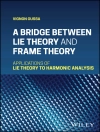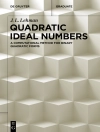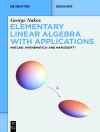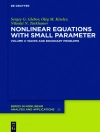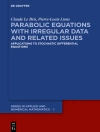This is a collection of exercises in the theory of analytic functions, with completed and detailed solutions. We wish to introduce the student to applications and aspects of the theory of analytic functions not always touched upon in a first course. Using appropriate exercises we wish to show to the students some aspects of what lies beyond a first course in complex variables. We also discuss topics of interest for electrical engineering students (for instance, the realization of rational functions and its connections to the theory of linear systems and state space representations of such systems). Examples of important Hilbert spaces of analytic functions (in particular the Hardy space and the Fock space) are given. The book also includes a part where relevant facts from topology, functional analysis and Lebesgue integration are reviewed.
สารบัญ
Prologue.- I Complex numbers.- 1 Complex numbers: algebra.- 2 Complex numbers: geometry.- 3 Complex numbers and analysis.- 4. Remarks and generalizations: quaternions, etc.- II Functions of a complex variable.- 5 C-differentiable functions.- 6 Cauchy’s theorem.- 7 First applications.- 8 Laurent expansions and applications.- 9 Computations of definite integrals.- 10 Harmonic functions.- 11 Conformal mappings.-III Complements.- 12 Some useful theorems.- 13 Some topology.- References.- Index.
เกี่ยวกับผู้แต่ง
Prof. Daniel Alpay is a faculty member of the department of mathematics at Ben-Gurion University, Beer-Sheva, Israel. He is the incumbent of the Earl Katz Family chair in algebraic system theory. He has a double formation of electrical engineer (Telecom Paris, graduated 1978) and mathematician (Ph D, Weizmann Institute, 1986). His research includes operator theory, stochastic analysis, and the theory of linear systems. Daniel Alpay is one of the initiators and responsible of the dual track electrical-engineering mathematics at Ben-Gurion University. Together with co-authors, he has written two books and close to 190 research papers, and edited ten books of research papers.



